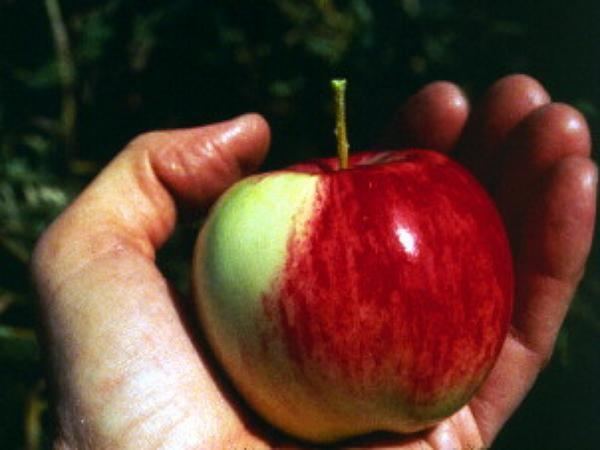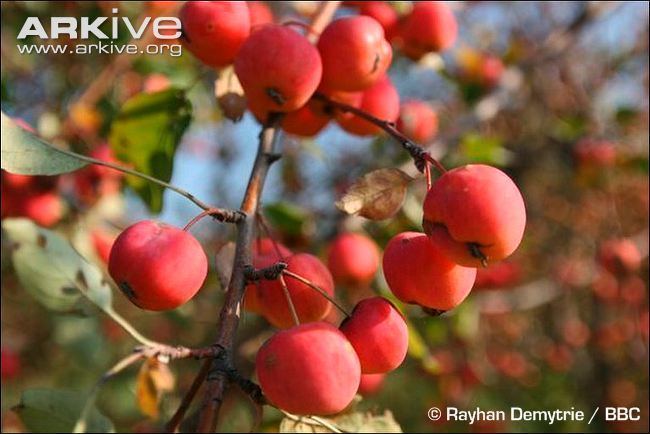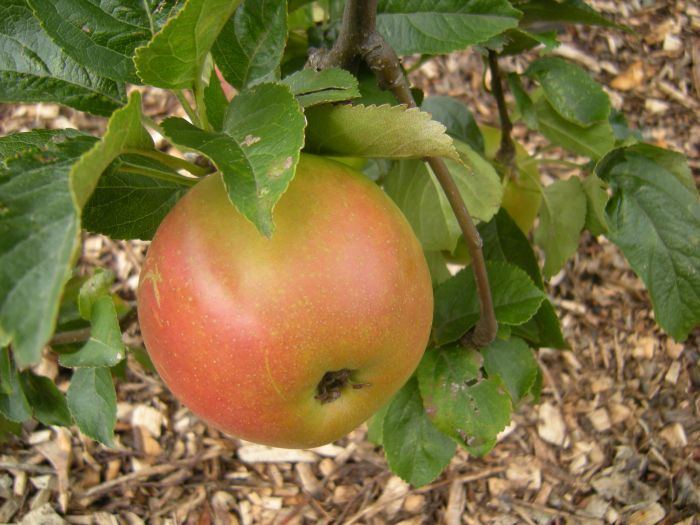Rank Species | Genus Malus Higher classification Apples | |
 | ||
Similar Apples, Malus sylvestris, Rosaceae, Malus baccata, Pyrus pyraster | ||
Malus sieversii is a wild apple native to the mountains of Central Asia in southern Kazakhstan. It has recently been shown to be the primary ancestor of most cultivars of the domesticated apple (Malus pumila). It was first described (as Pyrus sieversii) in 1833 by Carl Friedrich von Ledebour, a German naturalist who saw them growing in the Altai Mountains.
Contents

It is a deciduous tree growing to 5 to 12 metres (16 to 39 ft), very similar in appearance to the domestic apple. Its fruit is the largest of any species of Malus except pumila, up to 7 cm diameter, equal in size to many modern apple cultivars. Unlike domesticated varieties its leaves go red in autumn: 62.2% of the trees in the wild do this compared to only 2.8% of the regular apple plant or the 2,170 English cultivated varieties. The species is now considered vulnerable to extinction.

History and importance

Malus sieversii has previously been identified as the main contributor to the genome of the cultivated apple (Malus pumila), on the basis of morphological, molecular, and historical evidence. A DNA analysis in 2010 confirmed M. sieversii as the progenitor of the cultivated apple.

A third species that has been thought to have made contributions to the genome of the domestic apples is Malus baccata, but there is no evidence for this in older apple cultivars.

Almaty, the largest city in Kazakhstan, and formerly its capital, derives its name from the Kazakh word for "apple" (Alma), and is often translated as "full of apples" (the region surrounding Almaty is home to forests of Malus sieversii); alma is also "apple" in other Turkic languages, as well as in Hungarian. The Soviet-era name, Alma-Ata, is Kazakh for "Father of Apples".
Renewed interest
These and other Malus species have been used in some recent breeding programmes to develop apples suitable for growing in harsh climates unsuitable for M. pumila, mainly for increased cold tolerance.
Malus sieversii has recently been cultivated by the United States Agricultural Research Service, in hopes of finding genetic information of value in the breeding of the modern apple plant. Some, but not all, of the resulting trees show unusual disease resistance. The variation in their response to disease on an individual basis is, itself, a sign of how much more genetically diverse they are than their domesticated descendants.
